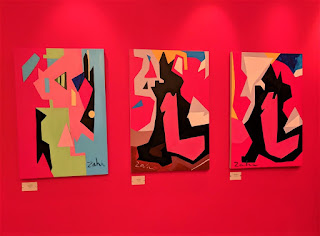I have just discovered that in my
semi-quarantine, I share space (well, head space) with the greats.
To wit, Nietzsche, Thoreau and Simone de Beauvoir (you go, girl). What do
we have in common? Walking. These thinkers were traipsers, strolling or
ambling or moseying along on a daily basis. According to Thoreau
“ I cannot preserve my health and spirits unless I
spend four hours a day…sauntering through woods and over…hills and
fields.” Four hours. Um, I did read that he also walked to his
mother’s house every day from the woods for meals, so I guess he had a
little more time on his hands than most of us. But still, it is known
that walking releases dopamine and serotonin and lowers cortisol,
creating a chemical cocktail that fuels creativity. Problems get solved
as you pace, ideas blossom as you ramble. For some, walking is integral
to the religious experience. The rituals of the Hajj involve
walking. Pilgrims and modern-day seekers of truth walk the Camino de
Santiago in Spain, finishing at least 100 km of its 780 km length in order to
receive a compostela, the certificate stating you completed the
pilgrimage. (A shorter Good Friday pilgrimage from Santa Fe, New Mexico
(28 miles) also draws thousands of walkers.) I have a dear friend who
walked the Spanish one, fighting blisters and fatigue; she told me
it was one of the most important healing moments of her life. For me,
walking was never a part of my life until recently, and then, the healing part
meant stopping for a meal or a glass of wine along the way. Having sold
my car upon my decampment to the city, I found myself on moving feet more
often, but public transport was my friend, and I hardly had time to walk as a
pastime—it was utilitarian, a way to get things done. Enter Covid19.
Time became an endless dark tunnel with few exits toward the light. Take
it, spend it, waste it, it was there all the time. I had a lot
of time. I also had back pains from sitting in my uncomfortable chair
hunched over this laptop, and the gym in my building was closed. (Who am I
kidding here—I never went the gym.) As the disembodied
heads of humans swam in front of my eyeballs, I began to long to see other body
parts –arms, legs, feet. Shoes! I wanted to see shoes.
So off I went, creating a 5-pm ritual of an hour’s walk in my
neighborhood. I read that walking outdoors improves your mood more
than doing the same on a treadmill (dreadmill, in my lexicon) because of the
healing effects of nature, but being an urban girl, I found the trees and
flowers merely a backdrop to the more interesting aspects of my walk—the
outfits! Sadly, for me, as the weather warms, sartorial splendor devolves
into semi-nudity (don’t they get sunburn, or bug bites?) but of course
sometimes a truly noble specimen of humanity passes by, compensating for the
lack of clothing. And there are still arms and legs and shoes for me to
examine, and yes, pass judgement upon. Aside from all these delights, I
began to notice that my thought processes seemed to be following my feet; a
brisk walk supported crisper thinking. I began to get ideas! Poetry in
motion does not only describe dancers, it is a metaphor for the way movement
stimulates the mind. The better I felt, the longer the walks
got. Four hours happens on a regular basis now. I am still
stuck with making the meals afterwards, though, having no Mrs. Thoreau to free
up my time. But hey, as I said, I have lots of time.
Adnan Charara, wish he were walking with me. Art
Heals.


















